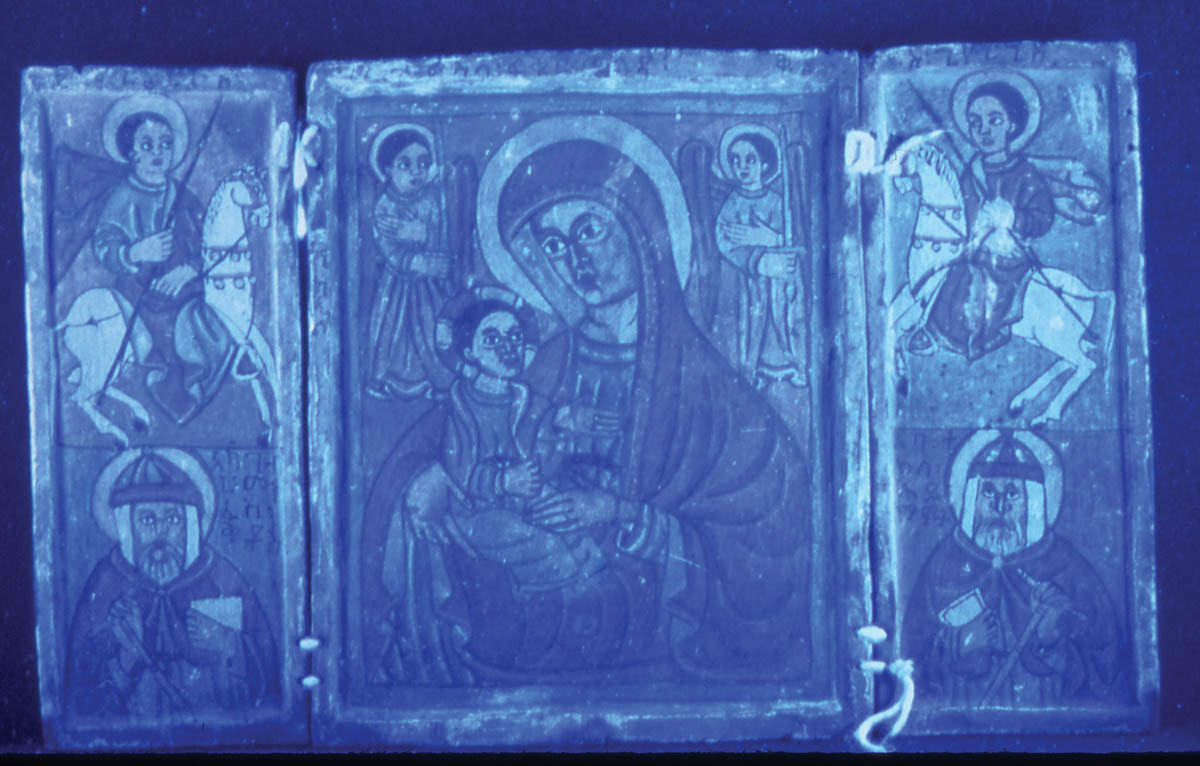TECHNICAL STUDY OF ETHIOPIAN ICONS, NATIONAL MUSEUM OF AFRICAN ART, SMITHSONIAN INSTITUTIONErica E. James
2 CONSTRUCTION OF ETHIOPIAN ICONSThe Ethiopian icons consist of a wooden secondary support, cloth primary support, a ground layer that adheres the secondary to the primary support, and a paint layer. Six icons in the NMAfA collection are constructed in this manner, although four of the icons lack a cloth primary support. Earlier research indicates that the secondary supports were constructed of wood either from the olive tree or the wanza tree, a type of cedar (Chojnacki 1973). The boards of each icon are usually hewn out of the same tree. The board is taken from the center of the tree, or pith, and the woodwork is done while the wood is still green and pliable. One board is split down the middle to achieve the two panels. Often the panel is chiseled out so that a raised border surrounds the icon on four sides. The raised border design is the earliest type of framing element recorded in European panel paintings, dating to the 13th century (Heydenryk 1963). This raised border design is evident in all the icons at NMAfA. The cotton primary support is adhered to the secondary support in the niche formed by the raised borders. Initially, the wood was primed with a ground layer before the final paint layer was applied, but starting in the 17th century a cloth, usually cotton, Previous field and anecdotal research indicates cinnabar, orpiment, indigo, gypsum, and charcoal pigments were typically used in painting the icons (Weihs 1973). The pigments were bound in a proteinaceous binder, most likely animal glue, producing a distemper medium. Cross sections taken during this current technical study revealed a systematic, deliberate application of paint layers. Finally, earlier research has also indicated that icons created previous to the 17th century were typically unvarnished. Those created later were given a vegetable lacquer coating containing aloe (Weihs 1973). The icons at NMAfA appear to be unvarnished.
|


